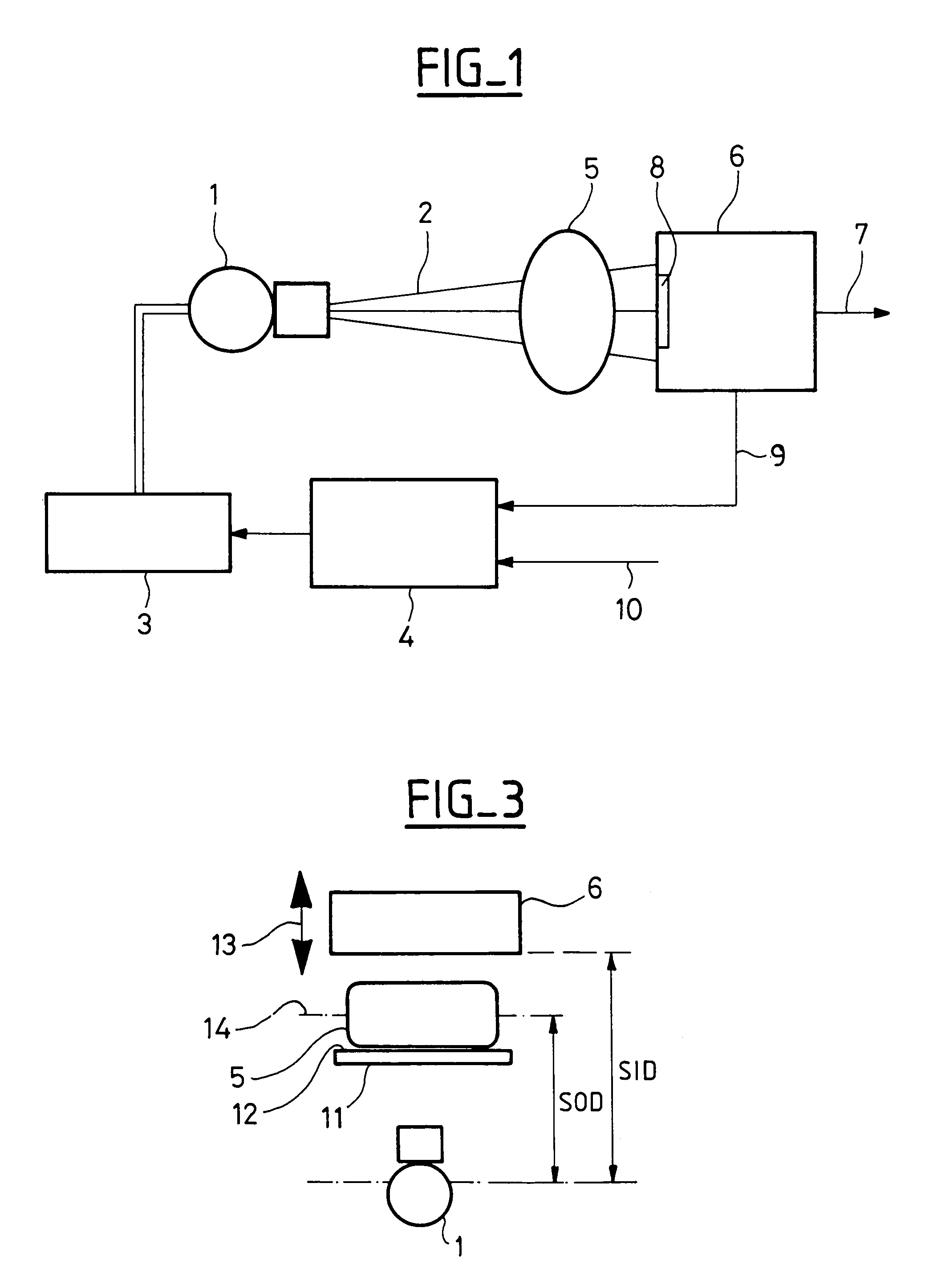Method and apparatus for control of exposure in radiological imaging systems
- Summary
- Abstract
- Description
- Claims
- Application Information
AI Technical Summary
Benefits of technology
Problems solved by technology
Method used
Image
Examples
Embodiment Construction
[0016]As can be seen in FIG. 1, the radiology apparatus comprises an X-ray tube 1 capable of emitting an X-ray beam 2 having an axis of propagation 16. The X-ray tube 1 is supplied by a high-voltage source 3 controlled by a control unit 4. Placed on the path of the X-ray beam 2 are an object 5 having to be studied, for example, a part of a object's body, and a digital type image receptor 6, for example, a solid-state receptor, capable of emitting on output on a line 7 a digital signal representing the image obtained by the image receptor 6, which picks up the X-ray beam after it has crossed the object 5. The line 7 can be connected to image processing means and to display means, such as a screen, not represented.
[0017]The radiology apparatus also includes a brightness sensor 8 capable of emitting on the line 9 connected to the control unit 4 a signal representing the brightness of the image obtained. The brightness sensor can be formed by a part of the solid-state detector. The cont...
PUM
 Login to View More
Login to View More Abstract
Description
Claims
Application Information
 Login to View More
Login to View More - R&D
- Intellectual Property
- Life Sciences
- Materials
- Tech Scout
- Unparalleled Data Quality
- Higher Quality Content
- 60% Fewer Hallucinations
Browse by: Latest US Patents, China's latest patents, Technical Efficacy Thesaurus, Application Domain, Technology Topic, Popular Technical Reports.
© 2025 PatSnap. All rights reserved.Legal|Privacy policy|Modern Slavery Act Transparency Statement|Sitemap|About US| Contact US: help@patsnap.com



